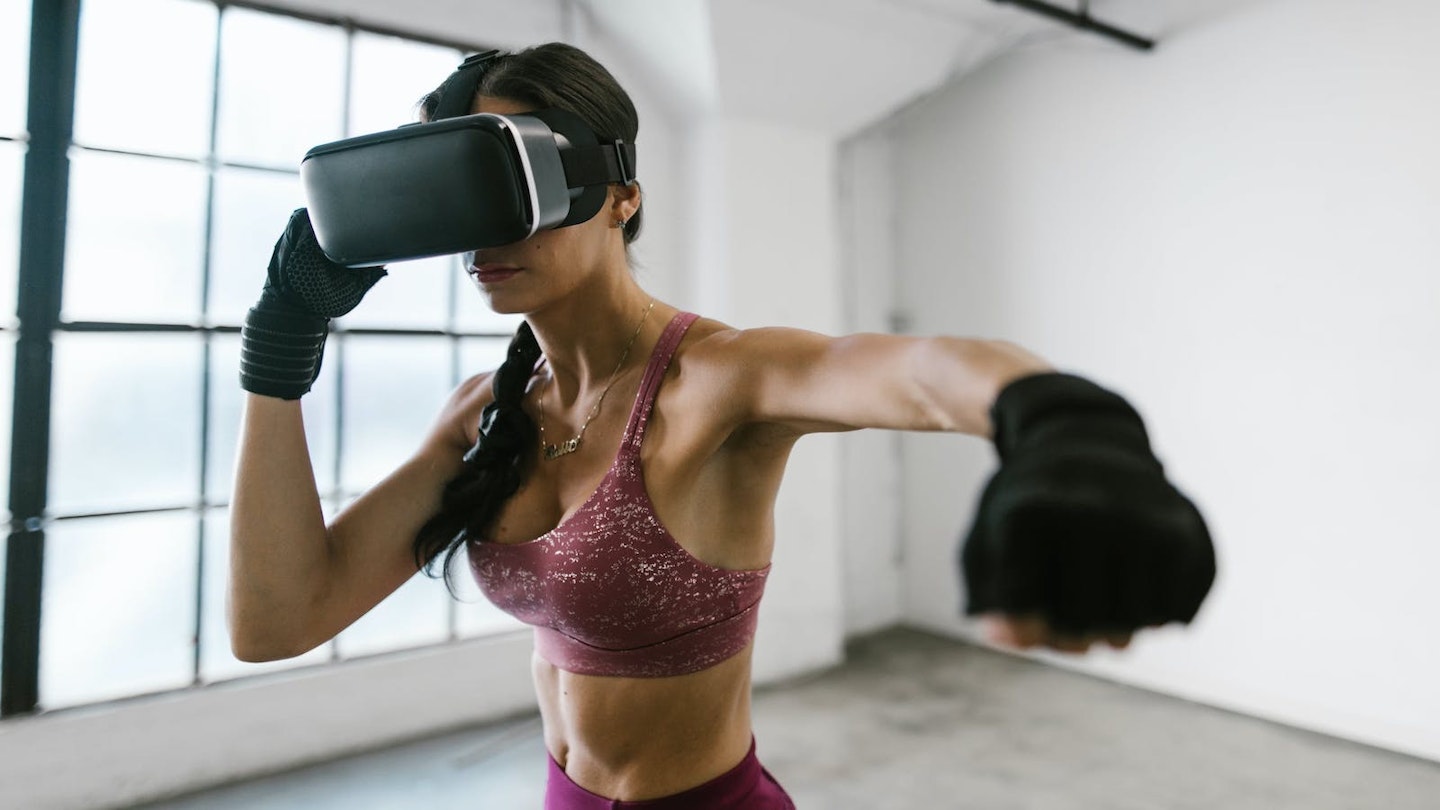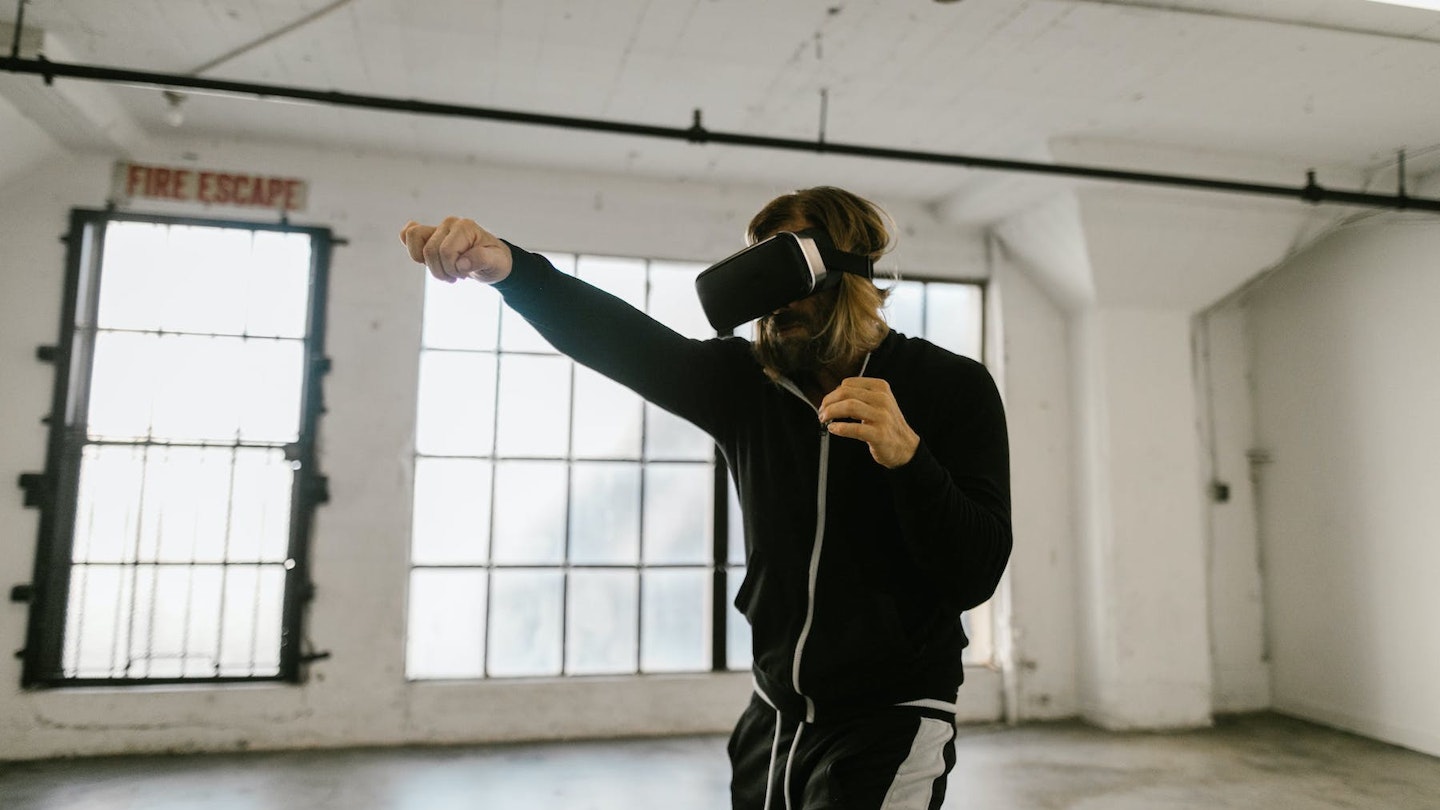The era of virtual reality (VR) fitness has dawned, ushering in a transformative shift in how we approach exercise, both in the home gym and in commercial spaces. This cutting-edge technology has introduced novel avenues for virtual fitness classes, personalised one-on-one training and immersive workout escapades.
Virtual fitness classes have emerged as a groundbreaking development within the fitness realm. Picture yourself jumping on your spin bike and attending a class from the comfort of your living room or participating in a high-intensity interval training (HIIT) session in a virtual world. VR fitness classes turn these scenarios into reality.
These VR fitness classes harness the power of VR headsets to transport you into virtual gymnasiums or outdoor settings. Here, instructors seamlessly guide you through workouts, replicating the experience of an in-person class. The immersive nature of the environment and real-time feedback create an authentic sensation, effectively dismantling the traditional barriers of fitness classes.
One-on-one personal training has long been cherished for its tailored guidance and accountability. The arrival of virtual reality has catapulted personal training into a new dimension, enabling trainers to connect with clients in a virtual realm.
Through VR, personal trainers can observe your form and provide immediate feedback, mirroring the dynamics of a traditional setting. This technology bridges the physical and virtual gap, offering a more accessible and flexible approach to personal training. It's similar to having your trainer by your side, regardless of your physical location.
Article summary: In this article, fitness expert Simon Diamond discusses Virtual reality (VR) fitness and how it is revolutionising exercise with immersive virtual classes and personalised training. While it offers motivation and inclusivity, it poses challenges for traditional gyms and trainers.

Equipment required
Virtual headset is the essential gateway to the virtual world. Top-tier VR headsets like the Oculus Quest or HTC Vive deliver immersive experiences with motion-tracking capabilities.
Controllers are handheld devices that serve as tools for interaction within the virtual environment. They enable you to track your movements, perform exercises and engage with the VR workout programme.
Some VR fitness systems come equipped with external sensors that meticulously monitor your physical movements, enhancing the accuracy of your workouts and detecting your body's position in space.
Various VR fitness applications and platforms, such as Supernatural and BOXVR, offer diverse workouts, from boxing to dance. These applications guide you through exercises, track your progress and dynamically adjust difficulty levels based on your performance.
The effectiveness of VR workouts
Pros:
VR workouts offer a level of engagement that traditional exercise routines often lack. The immersive nature of the virtual environment, combined with gamification elements, keeps users motivated. This heightened motivation makes it easier to stick to your fitness regimen over the long term, reducing the risk of falling off the exercise wagon.
Virtual reality opens the door to various workout possibilities and settings. VR has it all if you want to spar with a virtual opponent, hike through breathtaking landscapes, or dance to your favourite music in an otherworldly club. This variety helps break the monotony of repetitive workouts, ensuring you stay excited about your fitness routine.
One of the most significant advantages of VR fitness is its inclusivity. Regardless of your fitness level or physical abilities, you can find workouts that suit your needs. VR platforms often offer workouts with different intensity levels, making it possible for both beginners and seasoned athletes to benefit.
Virtual trainers, powered by AI algorithms, provide real-time feedback during workouts. They analyse your movements and offer guidance on maintaining proper form. This instant feedback not only improves the effectiveness of your exercises but also reduces the risk of injuries due to improper techniques.
Cons:
The fitness industry can already be an expensive place, with the best supplements, equipment and clothing reguiring a fair investment. Acquiring high-quality VR equipment requires an even more substantial upfront expense. This includes the cost of the VR headset, controllers and, in some cases, additional sensors. However, viewing this as an investment in your health and well-being is essential, given the benefits VR fitness can offer.
VR workouts require physical space for movement. Depending on the specific workout, you may need enough room to perform a range of motions, such as lunges, jumps, and stretches. This space requirement can be a limiting factor for individuals with limited living space, although many VR workouts offer scaled-down routines for smaller areas.
While motion sickness is less common with newer VR headsets, some individuals may still experience it during VR workouts. This discomfort can vary from mild to severe, impacting the enjoyment and effectiveness of the workout. To mitigate this, taking breaks and gradually building tolerance to VR motion can help.
VR fitness relies heavily on technology, and technical issues can disrupt your workout routine. Software glitches, hardware malfunctions, or system updates can lead to frustrating interruptions. It's essential to be prepared for these occasional hiccups and have a backup plan for traditional workouts when needed.
The impact on the fitness industry
On one hand, the rise of virtual reality fitness could threaten small, traditional gyms. These gyms may find it increasingly challenging to compete with VR's immersive and convenient virtual workout experiences. As more individuals opt for virtual fitness from the comfort of their homes, small gyms may experience a decline in memberships. To survive, these gyms may need to adapt by incorporating VR technology into their offerings or finding innovative ways to differentiate themselves from virtual fitness.
Similarly, personal trainers who cannot adapt to the new technological landscape may face challenges in sustaining their careers. Traditional personal training, while valuable, may no longer suffice in a world where virtual trainers can provide personalised guidance and real-time feedback through VR. Personal trainers must embrace technology and adapt their skills to remain relevant. This may involve incorporating VR into their training programmes or finding unique ways to complement the virtual fitness experience.
However, it's crucial to note that virtual reality's impact isn't solely detrimental. For many, VR represents a revolutionary way to engage in fitness and achieve health goals. The immersive nature of VR workouts keeps individuals motivated and engaged, making it easier to maintain a consistent fitness routine. Moreover, VR fitness offers accessibility to people of all fitness levels, as workouts can be tailored to individual needs and abilities. This inclusivity means virtually anyone can embark on a fitness journey, regardless of their starting point.
Additionally, VR fitness opens up new avenues for those who prefer to exercise virtually. VR provides a viable alternative to traditional gym settings, whether due to convenience, privacy, or personal preference. This is particularly valuable in today's world, where factors like busy schedules, long commutes, or health concerns may limit gym attendance.
Final thoughts
Virtual reality fitness represents more than a passing trend; it's a groundbreaking approach to maintaining fitness and overall health. With virtual fitness classes, personalised one-on-one training, and immersive workout experiences, VR fitness is proving its effectiveness, engagement, and transformative potential. As it continues to gain momentum, it is set to redefine how we approach exercise, offering exciting possibilities for the fitness industry and enthusiasts alike.
Simon Diamond is a contributor to What’s The Best with over a decade of expertise in fitness, nutrition and wellbeing. A former bodybuilder and fitness model winner, Simon holds multiple World Records for muscular endurance and strength titles.
Subscribe to the What’s The Best Newsletter to keep up to date with more of the latest reviews and recommendations from the rest of the What’s The Best team.
